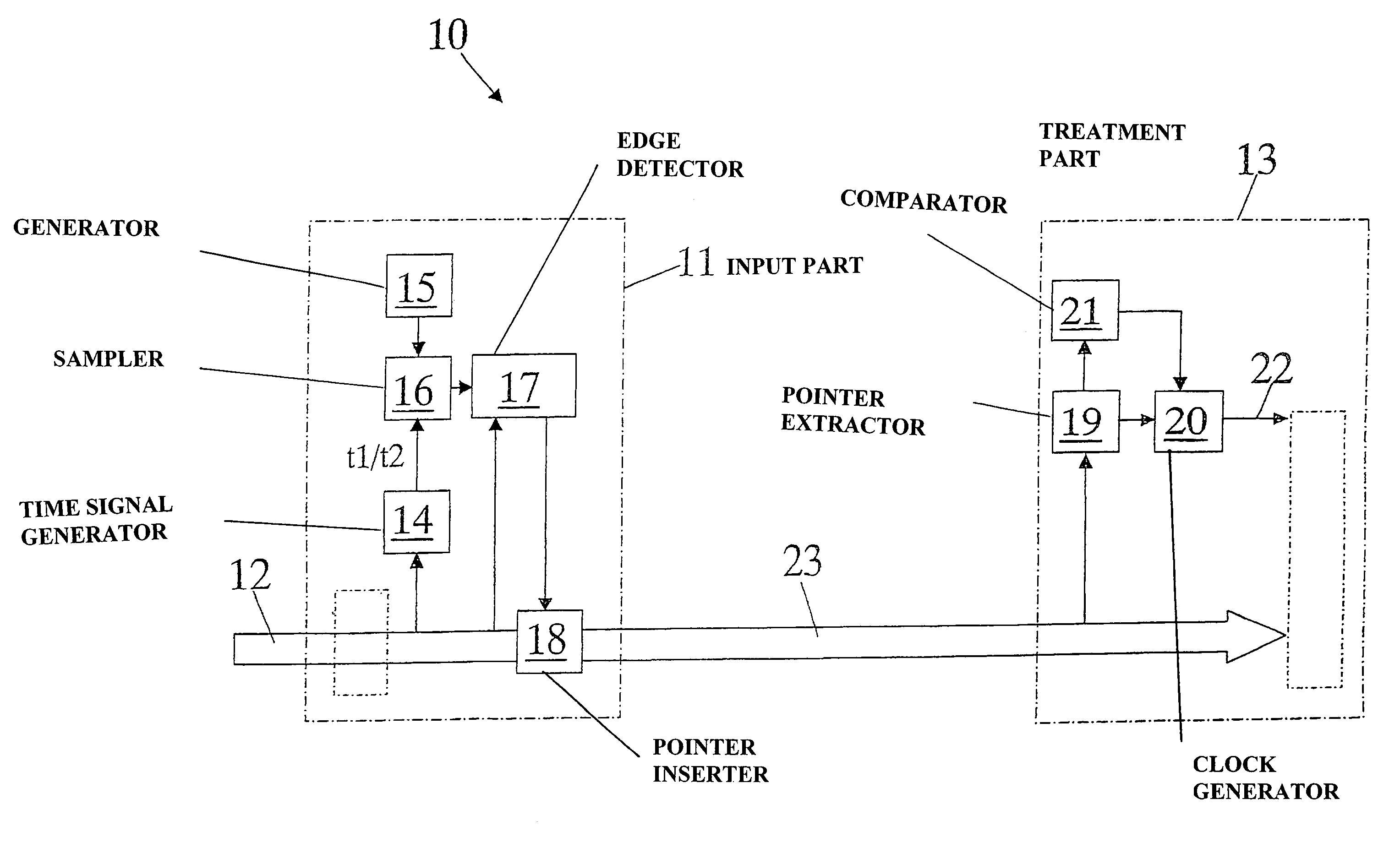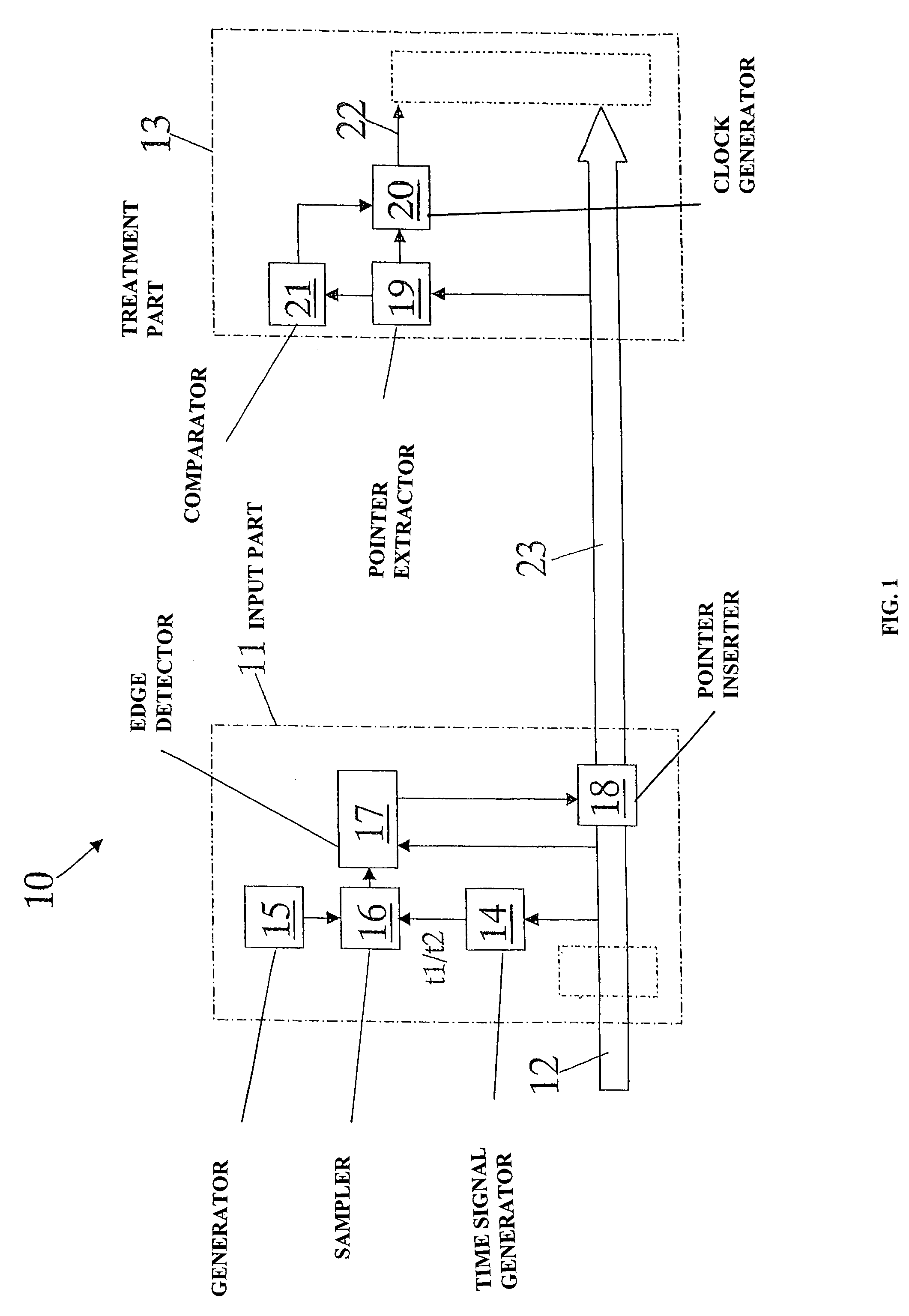Timing signal generation in telecommunications networks
- Summary
- Abstract
- Description
- Claims
- Application Information
AI Technical Summary
Problems solved by technology
Method used
Image
Examples
Embodiment Construction
[0012]With reference to the figure an apparatus designated as a whole by reference number 10 of a telecommunications network is shown diagrammatically. This apparatus comprises an input part 11 receiving the input signals 12 and a part 13 for treatment of these input signals. The treatment part is the nucleus of the apparatus and can be very far from the input part. The input and treatment parts comprise the normal functions and devices of this type of equipment and they will therefore not be described in detail as they are readily imaginable to those skilled in the art.
[0013]As is known, the input part 11 and the treatment part 13 are interconnected by lines 23 for transport of the input signals with a frame structure.
[0014]The treatment part requires a clock synchronized with references derived from the input signals.
[0015]Basically, the idea is to use for synchronization the same cables 23 which transport the traffic data while encapsulating the synchronization data in the frames...
PUM
 Login to view more
Login to view more Abstract
Description
Claims
Application Information
 Login to view more
Login to view more - R&D Engineer
- R&D Manager
- IP Professional
- Industry Leading Data Capabilities
- Powerful AI technology
- Patent DNA Extraction
Browse by: Latest US Patents, China's latest patents, Technical Efficacy Thesaurus, Application Domain, Technology Topic.
© 2024 PatSnap. All rights reserved.Legal|Privacy policy|Modern Slavery Act Transparency Statement|Sitemap


